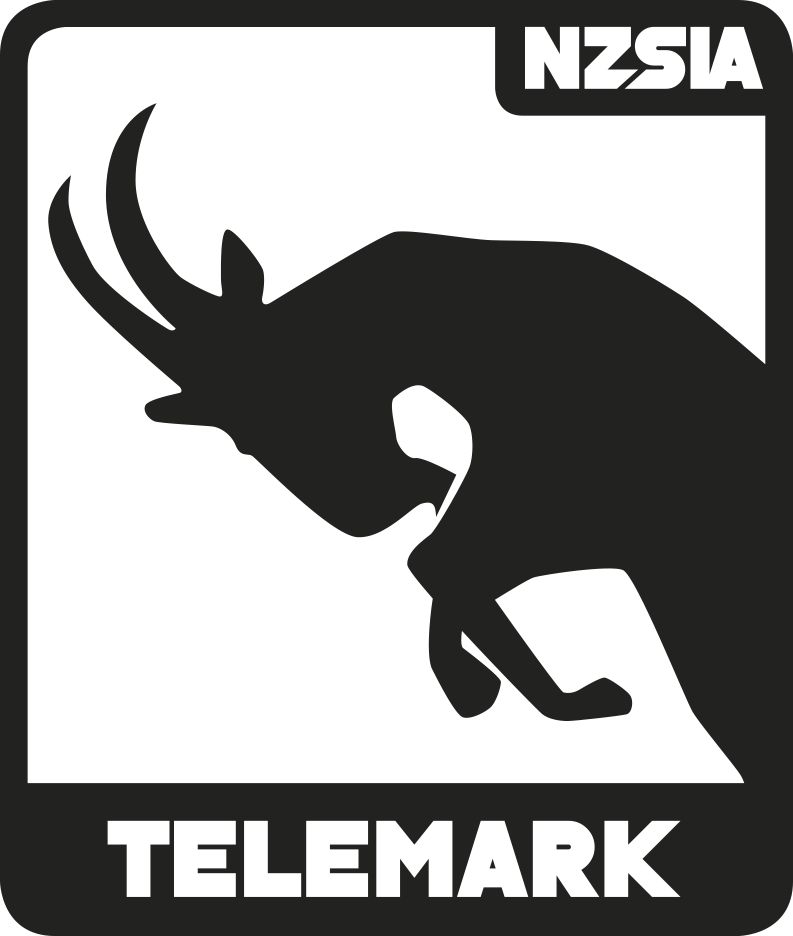Situational Telemark section provides key technical focuses for skiing in different conditions and terrain. These skills are not intended to be used in isolation but should be considered alongside good decision-making, experience, and sound technical fundamentals. Each environment presents unique demands that may require different levels of activity, movement, and tactics
Powder

 Technical Know-how
Technical Know-how
What’s New
Skiing in powder requires rhythm, float, and refined movements. Active stance and balance, ski-to-ski balance, and steering all adapt to the softness and variability of the snow. The following focuses are designed to help you move with the snow, not fight against it.
Performance Tips
Pressure – Release and Float
- Allow the skis to flatten momentarily during the turn to manage speed and direction. Releasing pressure at the right time allows the skis to rise and float, keeping you in control of your line.
Lead Change – Active Retraction or Extension
- Use either a flexion of both legs through the lead and edge change to promote efficiency. Retraction movements help manage terrain changes and allow a smooth transition in deep snow. Otherwise an extension can be used to unweight the skis but requires more movement and energy.
Equal Weighting
- Keeping even weight on both skis helps them stay level in the snow, encouraging even flotation and reducing the chance of one ski diving.
Centred and Active Stance
- Stay supple and rhythmical. A centred stance supports steering, flexion, and edging, allowing you to adapt to changes in snow depth and resistance.
Independent Leg Flexion
- Flex and extend each leg independently to maintain balance and absorb variations in terrain. This adaptive movement keeps your platform stable even as snow consistency changes.
Narrow Stance
- A slightly narrower stance in powder helps unify your platform. It promotes smoother steering and enhances the sensation of both skis working together with the snow.
Skills
Edging
- As snow resistance increases throughout the turn, allow your center of gravity to the inside of the turn during its latter phase. This helps maintain balance without over-angulating.
Edging and Ski Design
- Over-edging in powder can lead to diving or hooking. Use subtle edge angles and allow the skis—especially wide ones—to plane and steer naturally across the snow surface.
Low Edge Angles
- Use minimal edge angles. Maintain a flowing movement down the fall line and release both edges at the same time to keep a fluid rhythm. Let the snow shape the turn.
Steering – Stable Platform
- Maintain consistent pressure across both ski tips to keep the skis at a similar depth. A moving, narrow platform helps initiate and complete turns effectively, especially at slower speeds.
Steering – Rebound and Release
- Use the natural rebound of the skis as they rise from the snow to help initiate your next turn. The legs do the steering while the upper body continues to face downhill.
Simultaneous Steering
- Steer both feet at the same time using extension and guiding movements. In deeper snow, a touch of upper body guidance can assist the skis in finding their new line.
Lead Change – Adjusting for Turn Shape
- Use slow, smooth lead changes for long, flowing powder turns. In steeper terrain or at higher speeds, use quicker lead changes, particularly when skiing with fatter skis designed for flotation.
Lead Change – Short Turns
- In tighter terrain or when making shorter radius turns, combine the lead and edge change in one fluid movement. A quicker transition provides a more stable and reliable base.
Lead Change – Scissoring
- A subtle scissoring movement combined with gentle flexion-extension helps maintain consistent pressure under the skis. This builds a solid platform and promotes turn-to-turn fluidity.


